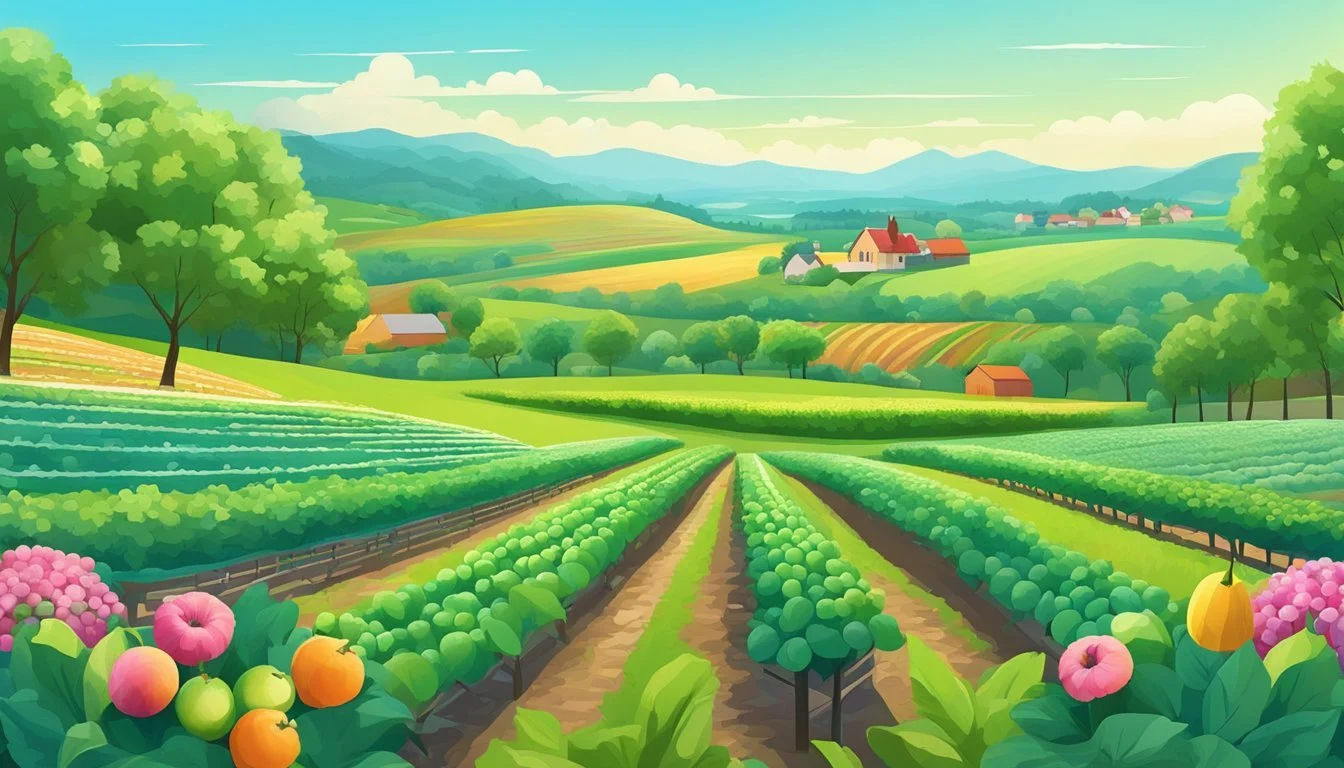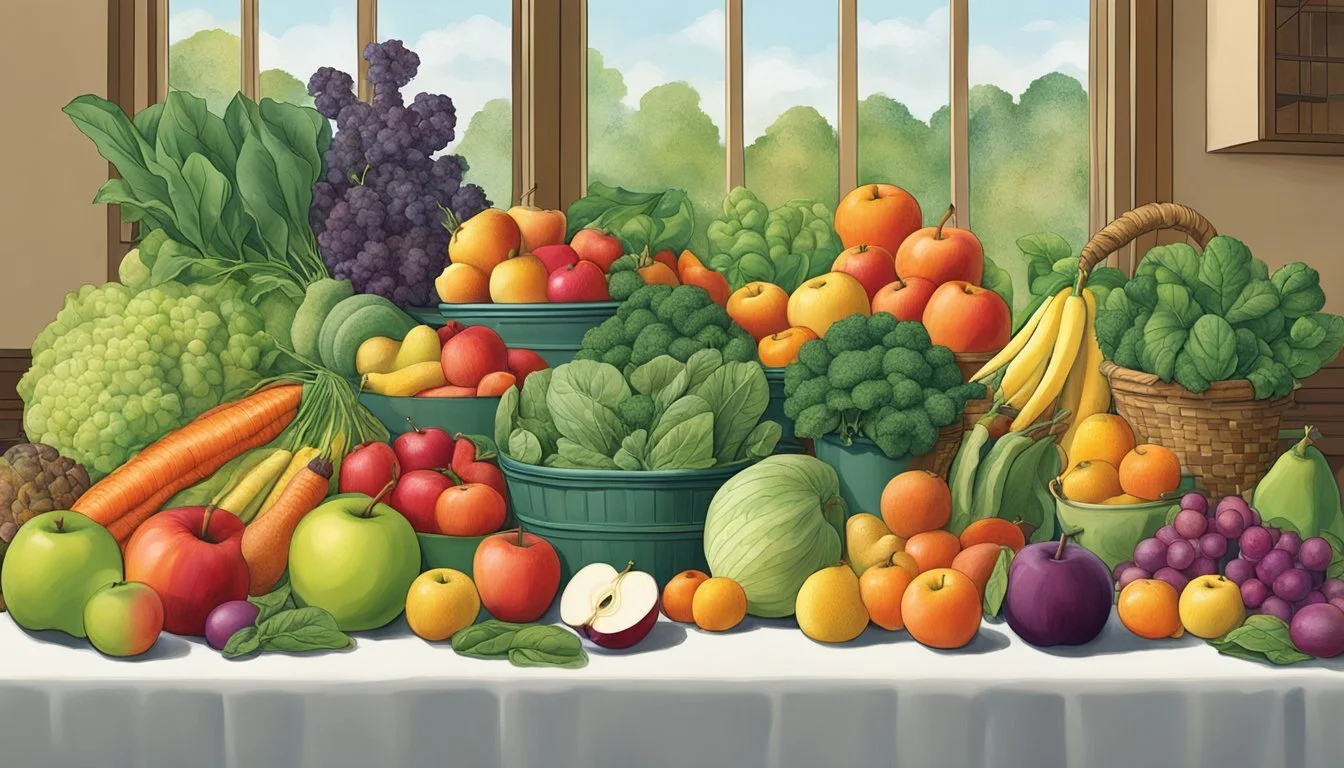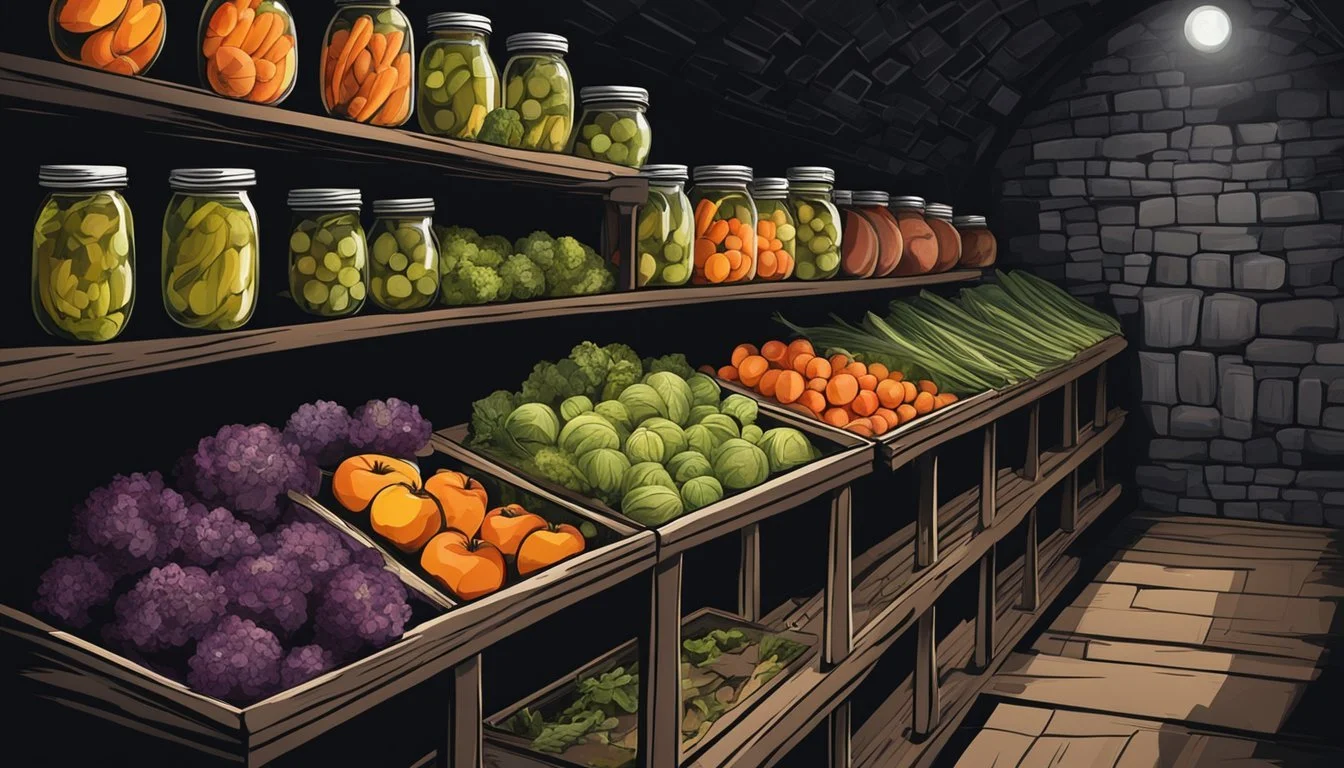Massachusetts Seasonal Fruit & Vegetables in March
A Guide to Fresh Produce Selection
This Article is Part of our Massachusetts Seasonal Fruit & Veg Calendar
March in Massachusetts marks the transition from the chill of winter to the first hints of spring, reflected in the subtle shifts within local produce offerings. While the state still experiences cold temperatures and the occasional late-season snowfall, March signals the time when early seasonal produce begins to make its way into farmers' markets and onto plates. Root vegetables and sturdy greens, which have persisted through the winter, continue to be available, providing robust flavors and nutrition.
In this period, Massachusetts enjoys the last of its cool-weather harvests. Produce such as parsnips and leeks, which have been available through the winter months, remain staples, thanks to their ability to withstand colder temperatures. Hardy greens such as kale and spinach are also still in season, offering versatility and vibrant color to a variety of dishes.
As the state looks forward to the warmer days ahead, March is the month to savor the hearty produce of late winter while anticipating the first tender greens of spring. Local chefs and home cooks alike take the opportunity to utilize the spectrum of flavors available from the state's farms, celebrating the last of the winter harvest while preparing for the new growth that spring will soon bring.
Overview of Seasonal Crops
March in Massachusetts is a transitional period where winter crops are still available, while the early spring produce begins to appear. This provides a range of vegetables and some fruits that can be enjoyed fresh and raw.
Key Vegetables in March
March offers a variety of greens including a healthy selection of spinach and cabbage, staples known for their versatility and nutritional value. Cauliflower and peas are also prominent, often marking their appearance as the cold begins to wane. Broccoli, a cruciferous vegetable, remains a hearty choice for meals and can often withstand cooler temperatures, making it a resilient March harvest.
Spinach: A nutrient-rich green, excellent for salads and cooked dishes.
Cabbage: Offers a robust flavor and can be found in many winter and spring meals.
Cauliflower: Versatile for cooking or consuming raw in salads.
Peas: Sweet and tender, often signaling the coming of spring.
Broccoli: A cold-hardy vegetable that is typically available year-round, but still prominent in March.
Prominent Fruits in March
While the fruit selection in March is more limited compared to the abundance of the late spring and summer months, consumers can still find storage varieties of apples and perhaps some pears in good condition. These fruits are from the previous season's harvest, yet they maintain their quality and taste when properly stored.
Apples: Durable and diverse, with varieties still flavorful after winter storage.
Pears: Less common than apples but can also be found in storage with good quality during early spring.
Preparing for Spring Harvest
As the growing season in Massachusetts approaches, gardeners and farmers prepare for the spring harvest. Key considerations include early planting techniques tailored to cool-weather crops and strategies for managing pests and weeds that can threaten the burgeoning produce.
Early Planting Techniques
Early planting in March is advantageous for cool-weather crops such as radish, parsley, and thyme. Successful early planting involves:
Soil Preparation: Ensuring the soil is well-drained and fertile; adding organic matter can enhance soil quality.
Seed Selection: Opting for seeds that can withstand cool spring temperatures.
Sowing: Planting seeds at the correct depth, as too deep or too shallow can hinder growth. Radishes, for instance, should be sown about ½ inch deep.
Managing Pests and Weeds
Effective pest and weed control is crucial for a thriving spring harvest. Farmers should:
Regular Monitoring: Check plants frequently for signs of pests such as aphids or caterpillars.
Natural Predators: Encourage beneficial insects like ladybugs that feed on common pests.
Weed Management: Remove weeds early to prevent competition for nutrients and water.
Mulching: Apply mulch to suppress weed growth and maintain soil moisture.
By addressing these factors early in the season, growers in Massachusetts can lay the groundwork for a successful and plentiful harvest of spring produce.
Health Benefits of Seasonal Consumption
Consuming fruits and vegetables during their peak season can significantly enhance their flavor and nutritional value, which in turn supports overall health and local economies.
Nutritional Advantages of Fresh Produce
Freshness Equals Nutrients: Fruits and vegetables like kale, brussels sprouts (how long do brussels sprouts last?), leeks, and radishes grown and harvested in their appropriate season maintain higher levels of vitamins and minerals. For instance:
Kale and chard offer abundant vitamins A, C, and K when fresh.
Beets are a prime source of fiber and folate during their peak season.
The crisp texture and milder flavor of lettuce and arugula when they are in season can enhance the appeal of salads, increasing consumption of these nutrient-rich greens.
These veggies are not only tastier but also pack a potent punch of wellness-promoting compounds when consumed in season.
Supporting Local Agriculture
Economic and Community Impact:
When consumers choose seasonal produce such as garlic, leeks, celery (how long does celery last?), and brussels sprouts, they directly impact their local farmers and the community's economy.
Purchasing from local markets means money circulates within the community, aiding job creation and sustainability.
Sustainability and Flavor:
Seasonal, locally-sourced vegetables like radishes and beets require less transportation and refrigeration, reducing the carbon footprint.
The natural maturity of these vegetables on the farm contributes to the superior flavor they offer—a crispiness in celery or a more intense flavor in garlic—adding an unmatched quality to culinary creations.
Culinary Uses and Recipes
In March, Massachusetts' diverse produce offers a wealth of options for dynamic and seasonal cooking. From fresh, crisp salads to hearty, comforting dishes featuring root vegetables, the local bounty informs a multitude of inspiring recipes.
Creating Spring Salads
Spring salads become vibrant and flavorful with the introduction of fresh greens and tender vegetables available in March. Cooks can combine asparagus, broccoli, and peas with a light, citrusy dressing to create a refreshing dish. The addition of spinach offers a nutritious boost, while radicchio can introduce a bitter contrast that's pleasing to the palate. Seasonal favorites can also be enjoyed in a:
Berry Salad: Incorporate the early spring berries with a mixture of greens and a balsamic reduction.
Citrus and Greens: Segment oranges or grapefruits for a zesty addition to leafy salads.
Cooking with Root Vegetables
Root vegetables, with their earthy flavors (What wine goes well with earthy flavors?) and satisfying textures, are ideal for roasting or weaving into comfort dishes. They can form the backbone of a roast vegetable medley, or be layered into a creamy bake.
Massachusetts cooks incorporate carrots and sweet potatoes to add a natural sweetness and heft to their dishes. These can be transformed into:
Roasted Carrot Soup: A creamy, spiced soup that warms up any chilly March evening.
Sweet Potato Casserole: A side dish that features the rich, earthy flavors of the season.
When it comes to pasta (how long does pasta last?), incorporating roasted root vegetables with a sprinkle of Parmesan can create a savory and memorable entrée. Artichokes (What wine goes well with artichokes?), while not a root vegetable, make a special appearance in March and can be prepared in a variety of ways, such as:
Stuffed Artichokes: Filled with a mixture of breadcrumbs, herbs, and cheese, then baked until tender.
Artichoke Pasta: Artichokes can be quartered and sautéed with garlic to be tossed with your favorite pasta.
Storage and Preservation
Proper storage and preservation methods ensure that the freshness and nutritional value of fruits and vegetables are maintained for as long as possible. This section delves into techniques that can be applied to common Massachusetts produce such as apples, pears, potatoes, onions, cabbage, and squash.
Extending Shelf Life of Produce
Apples and Pears: To extend their shelf life, store apples and pears in a cool, humid environment with good air circulation. Ideally, temperatures should be just above freezing. Apples can be kept fresh for several weeks, whereas pears have a shorter storage life.
Potatoes and Onions: Store potatoes in a cool, dark, well-ventilated area to prevent sprouting. Keep onions in a mesh bag or basket, separate from potatoes, which can emit gases that cause onions to spoil faster.
Cabbage and Squash: These vegetables thrive in a cool, moist environment. Store cabbage in the refrigerator and keep squash in a cool (50-55°F/10-13°C), dry place. Avoid washing squash before storage as moisture can lead to decay.
Canning and Freezing Methods
For longer preservation, canning and freezing are reliable methods to consider.
Apples and Pears: These fruits can be canned as jams, jellies, or preserves. Freezing is best done by first slicing the fruits and treating them with a lemon juice or ascorbic acid solution to prevent browning.
Potatoes and Onions: While potatoes are not often canned due to their dense nature, they can be frozen after being blanched. Onions can be chopped and frozen without blanching, making them convenient for later use.
Cabbage: Cabbage may be canned as sauerkraut (how long does sauerkraut last?) or relishes. Freezing cabbage is possible but should be blanched first to preserve color and texture.
Squash: Winter squash can be canned, but it must be done in cube form, not pureed. Freezing squash is straightforward: cook the flesh, mash it, then freeze in airtight containers.
Employing these storage and preservation methods allows one to enjoy Massachusetts fruits and vegetables for an extended time while minimizing waste.
Understanding Crop Availability
In Massachusetts, crop availability and harvest times are deeply influenced by both expected seasonal patterns and the prevailing climatic conditions. Knowing what produce is available each month helps consumers access fresh, locally-grown fruits and vegetables.
Seasonal Variations and Predictions
Seasonal variations play a crucial role in determining the availability of crops in Massachusetts. During March, a transition period between winter and spring, one can expect to see the last of winter produce as well as the beginning of some early spring harvests. The state enjoys a variety of cold-tolerant vegetables that can be available during this time, such as:
Root vegetables: Carrots and parsnips may still be harvested.
Leafy greens: Hardy spinach and kale varieties thrive in cooler temperatures.
Brassicas: Cabbages and Brussels sprouts typically round out the winter offerings.
Predicting the exact timing of crop availability can be complex, as it depends on the specific weather conditions each year. Farmers rely on accumulated historical data and modern forecasting methods to anticipate harvest times.
Impact of Climate on Harvest Times
Climate heavily influences harvest times in Massachusetts. March can be unpredictable with rain levels and the potential for frost, which can delay planting and affect early spring crops.
Key climatic factors include:
Temperature: Sudden warm spells can accelerate the growth of certain crops, while unexpected frost can cause damage.
Precipitation: Adequate rain is necessary for crop growth, but excessive rainfall can lead to planting delays and impact soil quality.
While farmers in the state are accustomed to such variability and plan accordingly, these factors underscore the challenges of agriculture in Massachusetts. Consumers should be aware that even with greenhouse technology and other agricultural advancements, some produce might face delayed availability due to such environmental constraints.







